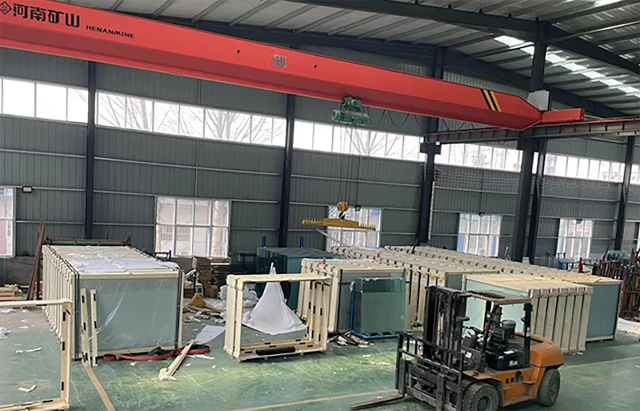Understanding Tempered Glass Pricing Factors and Trends
Tempered glass, also known as toughened glass, is a type of safety glass that has been treated by thermal or chemical means to increase its strength compared to normal glass. As the demand for tempered glass continues to rise across various industries, understanding the factors influencing its pricing becomes essential for both consumers and manufacturers.
The Basics of Tempered Glass
Tempered glass is produced by heating standard glass to high temperatures (up to 600°C or 1112°F) and then rapidly cooling it. This process creates compressive stress on the surface and tensile stress in the interior, resulting in a glass that is much stronger than its untreated counterpart. When broken, tempered glass shatters into small, blunt pieces, reducing the risk of injury, making it a preferred choice for applications such as shower doors, glass doors, facades, and automotive windows.
Factors Influencing Tempered Glass Prices
1. Raw Material Costs
The primary ingredient in tempered glass is silica sand, and fluctuations in the price of raw materials such as soda ash and limestone can significantly affect the overall cost. When global markets experience changes in these commodity prices—due to factors like supply shortages or increased demand—the impact is often seen in glass manufacturing costs.
2. Manufacturing Process
The complexity of the manufacturing process also affects pricing. Tempering involves specialized equipment and high energy consumption, and these operational costs are passed on to consumers. Additionally, manufacturers that prioritize advanced technology and automation may also incur higher initial investment costs, impacting the pricing structure of their products.
3. Thickness and Size
The thickness and size of the tempered glass significantly influence pricing. Standard sizes and thicknesses are more widely available and less expensive than custom sizes. For applications that require specific dimensions, the cost can increase considerably because of the additional processing and potential waste incurred during cutting.
tempered glass price
4. Market Demand
Market demand plays a pivotal role in pricing. For instance, the construction and automotive industries often drive demand for tempered glass. Economic trends, such as housing booms or increases in vehicle production, can lead to spikes in demand, thereby increasing prices. Seasonal factors, such as weather-related construction delays, can also impact demand fluctuations.
5. Geographic Location
The location of the manufacturer and consumer can lead to variations in cost. Transportation expenses and regional market conditions influence the final price. For example, transporting heavy glass products over long distances can add significant costs, leading to higher prices in areas where local manufacturers are scarce.
6. Regulatory Standards
Compliance with safety and building regulations can also affect prices. Tempered glass must often meet stringent local and international safety standards. The costs of obtaining certifications and ensuring product quality can contribute to overall pricing.
Price Trends and Forecasts
In recent years, the tempered glass market has shown a steady upward trend in pricing. This is partly due to increasing construction activity and the rising adoption of tempered glass in architectural designs. Additionally, the growing awareness of safety and energy efficiency has spurred demand for high-quality tempered glass products, pushing prices higher.
Analysts predict that the market will continue to grow, albeit at a more moderated pace, as supply chains stabilize and competition among manufacturers increases. The advent of sustainable manufacturing practices and the push towards eco-friendly building materials may also introduce new elements to pricing strategies in the future.
Conclusion
In conclusion, the pricing of tempered glass is influenced by a multitude of factors, from raw material costs and manufacturing processes to market demand and geographic considerations. For consumers and businesses alike, staying informed about these elements can lead to better purchasing decisions. As the market evolves, understanding these dynamics will be crucial for navigating the complexities of tempered glass pricing effectively. Whether for construction, automotive, or design purposes, tempered glass remains a vital material, with its pricing reflecting the intricacies of modern manufacturing and market demands.
 Afrikaans
Afrikaans  Albanian
Albanian  Amharic
Amharic  Arabic
Arabic  Armenian
Armenian  Azerbaijani
Azerbaijani  Basque
Basque  Belarusian
Belarusian  Bengali
Bengali  Bosnian
Bosnian  Bulgarian
Bulgarian  Catalan
Catalan  Cebuano
Cebuano  Corsican
Corsican  Croatian
Croatian  Czech
Czech  Danish
Danish  Dutch
Dutch  English
English  Esperanto
Esperanto  Estonian
Estonian  Finnish
Finnish  French
French  Frisian
Frisian  Galician
Galician  Georgian
Georgian  German
German  Greek
Greek  Gujarati
Gujarati  Haitian Creole
Haitian Creole  hausa
hausa  hawaiian
hawaiian  Hebrew
Hebrew  Hindi
Hindi  Miao
Miao  Hungarian
Hungarian  Icelandic
Icelandic  igbo
igbo  Indonesian
Indonesian  irish
irish  Italian
Italian  Japanese
Japanese  Javanese
Javanese  Kannada
Kannada  kazakh
kazakh  Khmer
Khmer  Rwandese
Rwandese  Korean
Korean  Kurdish
Kurdish  Kyrgyz
Kyrgyz  Lao
Lao  Latin
Latin  Latvian
Latvian  Lithuanian
Lithuanian  Luxembourgish
Luxembourgish  Macedonian
Macedonian  Malgashi
Malgashi  Malay
Malay  Malayalam
Malayalam  Maltese
Maltese  Maori
Maori  Marathi
Marathi  Mongolian
Mongolian  Myanmar
Myanmar  Nepali
Nepali  Norwegian
Norwegian  Norwegian
Norwegian  Occitan
Occitan  Pashto
Pashto  Persian
Persian  Polish
Polish  Portuguese
Portuguese  Punjabi
Punjabi  Romanian
Romanian  Russian
Russian  Samoan
Samoan  Scottish Gaelic
Scottish Gaelic  Serbian
Serbian  Sesotho
Sesotho  Shona
Shona  Sindhi
Sindhi  Sinhala
Sinhala  Slovak
Slovak  Slovenian
Slovenian  Somali
Somali  Spanish
Spanish  Sundanese
Sundanese  Swahili
Swahili  Swedish
Swedish  Tagalog
Tagalog  Tajik
Tajik  Tamil
Tamil  Tatar
Tatar  Telugu
Telugu  Thai
Thai  Turkish
Turkish  Turkmen
Turkmen  Ukrainian
Ukrainian  Urdu
Urdu  Uighur
Uighur  Uzbek
Uzbek  Vietnamese
Vietnamese  Welsh
Welsh  Bantu
Bantu  Yiddish
Yiddish  Yoruba
Yoruba  Zulu
Zulu 

